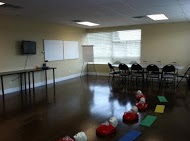
It is interesting that many individuals who experience high blood pressure attacks fail to realize the seriousness of such a scenario. This is further complicated when the patient himself does not realize the symptoms of the impending condition making it hard to be prepared for first aid help. This may partly be caused by the fact that some patients do not experience any warning signs, while others will complain of feeling differently from what is normal. This in itself is reason enough for individuals to learn the necessary first aid for high blood pressure.
Typically, high blood pressure, also known as hypertension, tends to have increased likelihood when individuals grow older. Studies have also shown that hypertension is also more prevalent in men than it is in women. In an interesting twist, women are more predisposed to high blood pressure once they reach menopause. Hypertension has also been linked to a sedentary lifestyle, and is further complicated by cardiac diseases. This is yet another reason that as many individuals as possible must take up training classes in first aid for high blood pressure.
[youtube url=”https://www.youtube.com/watch?v=3nUnVzr7KmY” width=”220″]Perhaps the most critical aspect of this is that hypertension is referred to as the silent killer. An individual can go for years without suspecting that their blood pressure is elevated. Seemingly out of the blues the symptoms come to light, sometimes too late. It is for this reason that in addition to first aid for high blood pressure, individuals must undergo regular screening to be proactive and not reactive. With this in-depth background, let us look at some of the symptoms that you need to look out for before administering first aid.
– Severe headache for long periods of time, especially those that require a high dose of painkillers.
– Unwarranted anxiety
– Dizziness
– Sweaty palms
– Sudden unexplained general body weakness
– Stiffness in different parts o f the body.
– Some patients, prior to elevated blood pressure, will start to experience frequent episodes of nose bleeding.
The procedure for first aid for high blood pressure
– Take a deep breath and try to calm as much as possible. This is also applicable if you are the one to offer first aid because there is really no need in acting apprehensively in an attempt to help a patient.
– Steer clear of trigger factors that seek to raise your blood pressure by causing you to be anxious.
– If you are nose bleeding, gently pinch the sides of your nose and tilt your head slightly. An icepack at this stage would be a good option. The pack is placed on the victim’s forehead.
– The victim could also take freshly made fruit juice with no additives. This is helpful because the juices contain potassium which comes in handy in the reduction of the blood pressure.
– The last step will involve getting professional medical help to understand whether there are any underlying conditions.
At the end of the day, preventive measures are preferred to medical treatment, especially with the procedures for first aid for high blood pressure in mind.